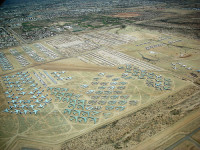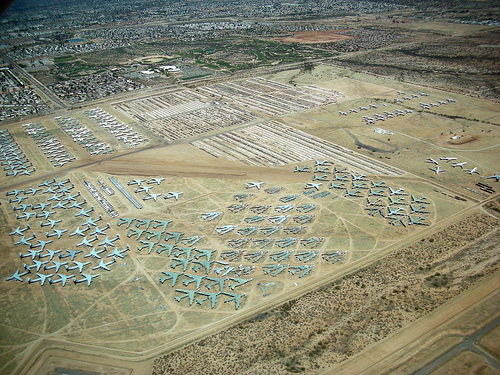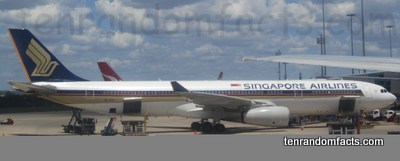
Just imagine a film set in an aircraft boneyard.
- Aircraft boneyards are areas of land that hold aircraft that have been abandoned, retired from service, or are non-functional.
- ‘Aircraft boneyards’ are also known as ‘aircraft graveyards’, and they are located in a number of countries around the world, including Russia, the United States, and Australia.
- Aircraft boneyards are generally used as a space to store excess planes, or as a holding area for aircraft waiting to be recycled, and they can also include a maintenance facility.
- Most commonly, aircraft boneyards are situated in desert areas, as plane corrosion is less likely, and the ground is usually firm and solid.
- The largest aircraft boneyard in the world is ‘the Boneyard’, formally known as the ‘309th Aerospace Maintenance and Regeneration Group’ (AMARG).
Aircraft Boneyard at Tuscon
Image courtesy of Daniel Lobo/Flickr
- Common reasons for aircraft abandonment include war damage, aging, lower demand during wars, and increasing economical expenses.
- Large quantities of aircraft were left abandoned in aircraft boneyards after World War II, during aircraft upgrades to jet engines in the 1970s, in the 9/11 disaster aftermath in 2001, and during economic problems from 2007.
- Aircraft sent to aircraft boneyards are generally preserved and sealed by being coated in a layer of latex mixture, which protects the interior and reflects heat, while oil is used to fill tanks and preserve the engines.
- Some planes in aircraft boneyards can be used again in the future, so aircraft inspections often occur at intervals of around four years, while other planes are commonly used for spare parts.
- Most aircraft boneyards are not open to the public, although some large facilities may open for visitors, and these sometimes have a museum onsite with planes on display.
Bibliography:
Aircraft Boneyard, 2014, Wikipedia, http://en.wikipedia.org/wiki/Aircraft_boneyard
Field Guide to Aircraft Boneyards, 2009, John A Weeks III, http://www.johnweeks.com/boneyard/
List and Map of Active and Post-WWII Aircraft Boneyards and Storage Facilities, 2015, AirplaneBoneyards.com, http://www.airplaneboneyards.com/airplane-boneyards-list-and-map.htm
Zentner J, Airplane Graveyards, 2015, DesertUSA, http://www.desertusa.com/arizona-desert/airplane-graveyards.html










